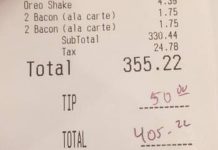When Amy Anderson lost her son in utero, it was the second miscarriage she had in just a year. Overwhelmed with grief, Anderson — who already had a 3-year-old — was even more taken aback when her breast milk started coming in.
Doctors told her to take Sudafed and pin up her breasts to stop the milk, but it didn’t work. So instead, she started pumping and freezing what she preferred to call “Bryson’s milk.”
“It kept me connected to Bryson, and I felt like I was doing something to honor his life,” Anderson told SheKnows. “Baby loss is not a typical grief. When you lose a baby, people expect you to get over it. ‘Don’t mention that baby, that baby is gone.’ Babies lost during pregnancy, birth or infancy are kind of an abstract thought to everyone else, so I loved that in donating Bryson’s milk, I got to say his name regularly. Some people were still weirded out, but there was lots of support, and his life was acknowledged [through my donations].”

But that was just the beginning. What Anderson didn’t know was that she was about to produce 11,762 ounces of milk over eight months — or 92 gallons. She even started her own Facebook page called “Donating Through Grief: Bryson’s Legacy.” Her milk was donated to the Mothers’ Milk Bank Northeast andMother’s Milk Bank of Ohio, where it went on to help children in five different states and three different countries.
“I decided to donate Bryson’s milk and turn my tragedy into a blessing,” Anderson, from Caribou, Maine, told Philly Voice. “At the time, I didn’t know what I would do with the milk, but I knew I needed to stop trying to prevent my body from lactating.”
Now, Anderson is fighting to help change the federal Break Time for Nursing Mothers Law, which doesn’t cover mothers like her who lost their baby but are still lactating, and might want to donate their milk.
For more about Amy’s story, you can go here.



